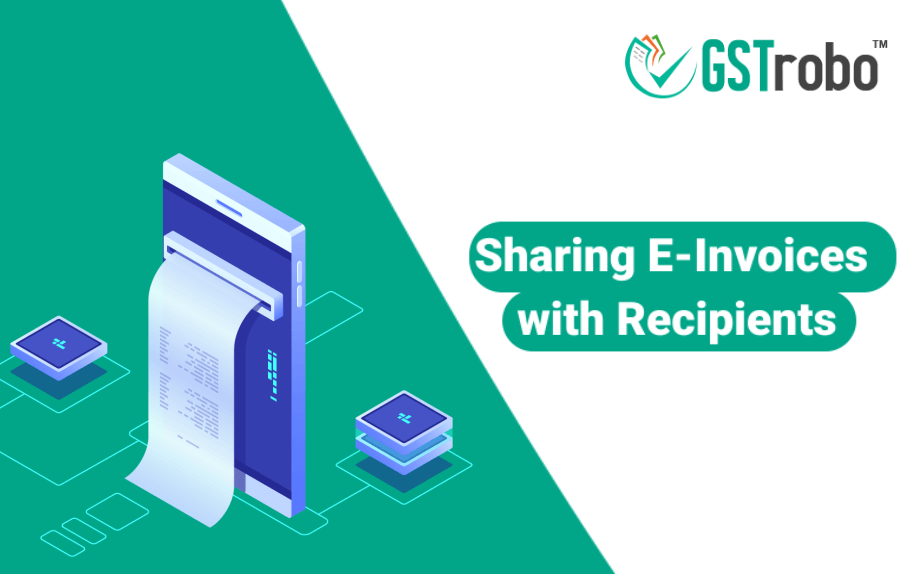Sharing E-Invoices With Recipient
The Government of India is implementing an e-invoicing system for a different types of taxpayers in different phases:
1st Phase of e-invoicing covered all the taxpayers whose aggregate turnover exceeded INR 500 Cr during any previous FY. The first phase of e-invoicing got implemented on 1st October 2020.
2nd Phase of e-invoicing covered all the taxpayers whose aggregate turnover exceeded INR 100 Cr during any previous FY. The second phase of e-invoicing got implemented on 1st January 2021.
3rd Phase of e-invoicing covered all the taxpayers whose aggregate turnover exceeded INR 50 Cr during any previous FY. The third phase of e-invoicing will be soon implemented on 1st April 2021.
4th Phase of e-invoicing covered all the taxpayers whose aggregate turnover exceeded INR 20 Cr during any previous FY. The fourth phase of e-invoicing will be soon implemented on 1st April 2022.

E-Invoice Shared By Supplier
Under the new e-invoicing system, the supplier first needs to create an invoice for supplying the goods or/and services on their ERP. After creating an invoice they need to upload the same on the Invoice Registration Portal (IRP). As a response, the IRP gives a signed JSON file to the supplier. After that, the supplier needs to share the e-invoice with IRN and a signed QR code with the recipient preferably in the PDF.
Can a Supplier E-mail E-invoices Directly to Recipient Using IRP?
No, a Supplier cannot e-mail e-invoices directly to a recipient using IRP. It is the sole responsibility of the supplier to share the e-invoice with the recipient in a printable format such as PDF or he/she can send the hard copies of the same.
How Recipient Can Verify an E-Invoice?
As we already know that the supplier cannot e-mail an e-invoice to the recipient directly through IRP. But the recipient can verify an e-invoice authenticity using the IRP. Via IRP, a recipient can validate the details of an e-invoice issued to them. Using the IRP QR code verifying application, the recipient can easily verify an e-invoice.
Do the Supplier Needs to Digitally Sign an E-invoice?
As the CGST Rules 46, a digital signature of the supplier or any other person authorized by the supplier is required to make the invoice GST compliant. But in the case of e-invoicing, IRP generates a unique identification number known as IRN along with a signed QR code. In other words, the supplier does not need to digitally sign an e-invoice and can share an e-invoice directly with the recipient.
Do the Supplier Needs to Carry Hard Copy of an E-invoice?
No, at the time of supplying goods or/and services, the taxpayer does not have to carry a hard copy of an e-invoice. The tax officer can easily authenticate an e-invoice using the IRP application via a handheld device.
How Can GSTrobo® Help You?
GSTrobo® – a division of Binary Semantics, is a one-stop GST compliance solution provider offering industry-leading GST, e-way bill, and e-invoicing software. These solutions not only seamlessly integrate with all the ERPs but also automates most of your e-invoicing process.
